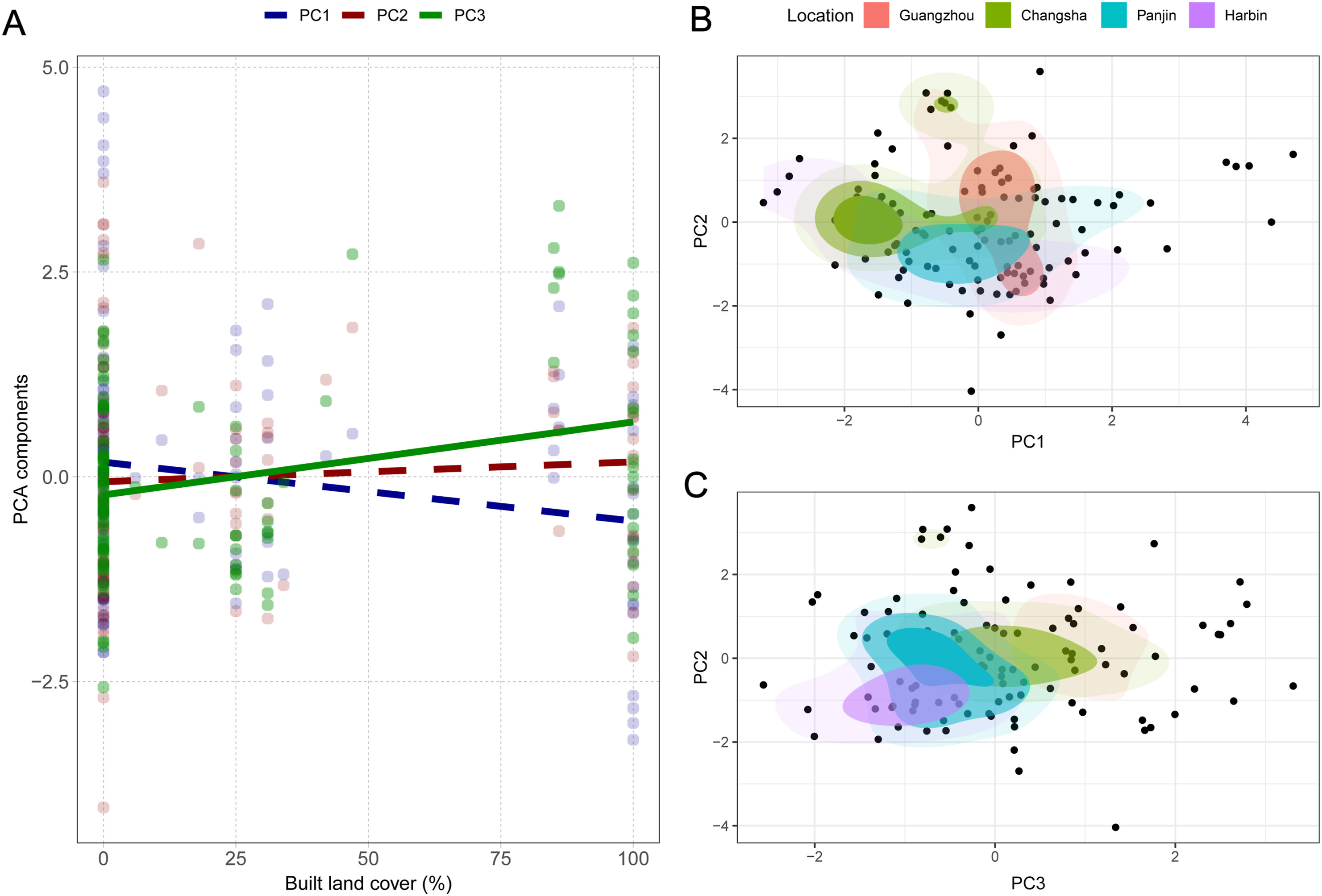
Left: Study locations across 22° of latitude and 9° of longitude in the P. R. of China. Right: Satellite images of study locations in which nest sites are indicated with yellow points. (For interpretation of the references to color in this figure legend, the reader is referred to the Web version of this article.)
Figures of the Article
-
![]() Left: Study locations across 22° of latitude and 9° of longitude in the P. R. of China. Right: Satellite images of study locations in which nest sites are indicated with yellow points. (For interpretation of the references to color in this figure legend, the reader is referred to the Web version of this article.)
Left: Study locations across 22° of latitude and 9° of longitude in the P. R. of China. Right: Satellite images of study locations in which nest sites are indicated with yellow points. (For interpretation of the references to color in this figure legend, the reader is referred to the Web version of this article.)
-
![]() Typical nest sites of Barn Swallows in our study locations. In southern China, Barn Swallows (Hirundo rustica) usually nest outside of the first floor of buildings, which are often low and sparse in rural areas (A), while tall and dense in urban areas (B). In some rural areas, they may also nest in the main room on the ground floor (e.g., Changsha). In northern China, Barn Swallow nests in rural areas are usually located in yards, and these houses are usually low, with only one floor in both Harbin and Panjin (C). Sometimes, in urban areas, Barn Swallows may nest inside old buildings and enter and exit through the windows of stairwells (D).
Typical nest sites of Barn Swallows in our study locations. In southern China, Barn Swallows (Hirundo rustica) usually nest outside of the first floor of buildings, which are often low and sparse in rural areas (A), while tall and dense in urban areas (B). In some rural areas, they may also nest in the main room on the ground floor (e.g., Changsha). In northern China, Barn Swallow nests in rural areas are usually located in yards, and these houses are usually low, with only one floor in both Harbin and Panjin (C). Sometimes, in urban areas, Barn Swallows may nest inside old buildings and enter and exit through the windows of stairwells (D).
-
![]() (A) Linear relationships between landscape urbanization, measured as % of built land cover (built area within 1 km2 around nests), and three components (PC1, PC2 and PC3; see Table 1) with eigenvalues higher than 1 extracted from a principal component analysis on seven environmental factors in 120 nests of Barn Swallows (Hirundo rustica) collected during 2018. Dashed lines represent non-significant relationships. (B) Two-dimensional kernel density estimation based on PC1 and PC2 by study location. The shaded areas depict the inferred probability density function in the two-dimensional space with darker colors meaning a higher probability to find a nest within these component coordinates. (C) Following the same approach, two-dimensional kernel density estimation based on PC2 and PC3. (For interpretation of the references to color in this figure legend, the reader is referred to the Web version of this article.)
(A) Linear relationships between landscape urbanization, measured as % of built land cover (built area within 1 km2 around nests), and three components (PC1, PC2 and PC3; see Table 1) with eigenvalues higher than 1 extracted from a principal component analysis on seven environmental factors in 120 nests of Barn Swallows (Hirundo rustica) collected during 2018. Dashed lines represent non-significant relationships. (B) Two-dimensional kernel density estimation based on PC1 and PC2 by study location. The shaded areas depict the inferred probability density function in the two-dimensional space with darker colors meaning a higher probability to find a nest within these component coordinates. (C) Following the same approach, two-dimensional kernel density estimation based on PC2 and PC3. (For interpretation of the references to color in this figure legend, the reader is referred to the Web version of this article.)
-
![]() Linear relationships between (A) built land cover (built area within 1 km2 around nests) and laying date (date on which first egg was laid measured as Ndays since March 1st), (B) PC1 and laying date, (C) PC2 and laying date, and (D) PC1 and clutch size (Neggs). Data collected from 120 nests of Barn Swallows (Hirundo rustica) collected during 2018 at four locations in China (Guangzhou, Changsha, Panjin and Harbin), data points from each location are depicted with different colors. (For interpretation of the references to color in this figure legend, the reader is referred to the Web version of this article.)
Linear relationships between (A) built land cover (built area within 1 km2 around nests) and laying date (date on which first egg was laid measured as Ndays since March 1st), (B) PC1 and laying date, (C) PC2 and laying date, and (D) PC1 and clutch size (Neggs). Data collected from 120 nests of Barn Swallows (Hirundo rustica) collected during 2018 at four locations in China (Guangzhou, Changsha, Panjin and Harbin), data points from each location are depicted with different colors. (For interpretation of the references to color in this figure legend, the reader is referred to the Web version of this article.)
Related articles
-
2025, 16(1): 100225. DOI: 10.1016/j.avrs.2025.100225
-
2025, 16(1): 100218. DOI: 10.1016/j.avrs.2024.100218
-
2024, 15(1): 100211. DOI: 10.1016/j.avrs.2024.100211
-
2023, 14(1): 100118. DOI: 10.1016/j.avrs.2023.100118
-
2022, 13(1): 100067. DOI: 10.1016/j.avrs.2022.100067
-
2021, 12(1): 59. DOI: 10.1186/s40657-021-00293-2
-
2021, 12(1): 37. DOI: 10.1186/s40657-021-00273-6
-
2020, 11(1): 32. DOI: 10.1186/s40657-020-00218-5
-
2020, 11(1): 15. DOI: 10.1186/s40657-020-00201-0
-
2016, 7(1): 10. DOI: 10.1186/s40657-016-0045-2


 Download:
Download:








 Email Alerts
Email Alerts RSS Feeds
RSS Feeds